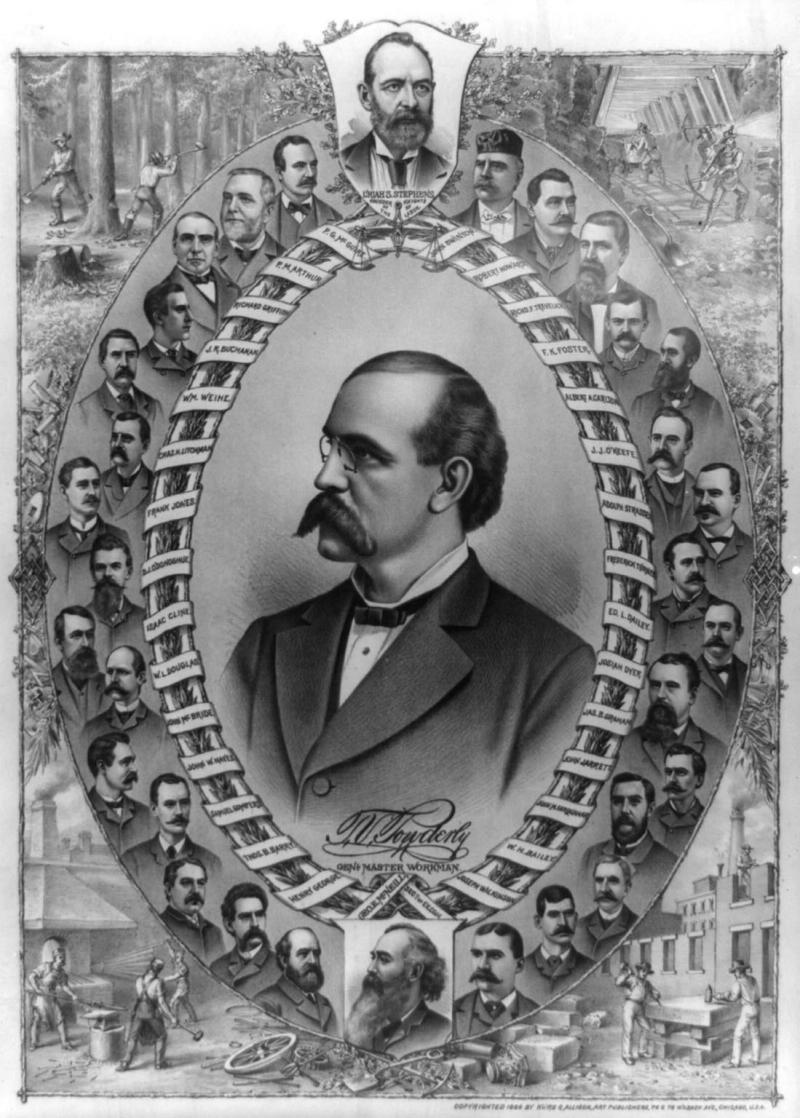Leaders of the Knights of Labor
During the late nineteenth century, many workers joined unions in hopes of improving their working conditions and wages. In just three years between 1877 and 1880, the number of national unions grew from three to eighteen.
The Knights of Labor was one early labor union, organized in Philadelphia in 1871 by garment cutters. In its early days, the Knights of Labor was a a secret society, which fueled rumors in the press that they were dangerous or violent. The rumors were encouraged by factory owners who feared that organization of their workers would lead to strikes.
Within a few years, the Knights of Labor expanded and allowed all workers to join. In 1878, they released this public statement about the goals of their society. No longer a secret society, the Knights of Labor grew into one of the largest labor unions in the United States. By 1886, the Knights of the Labor boasted 500,000 members.
Print shows Terence V. Powderly, "Genl. Master Workman", bust portrait, facing left, within a wreath with, at top, Uriah S. Stephens, "Founder of the Knights of Labor", bust portrait, facing right, and at bottom, George E. McNeill, "Secy. of Ex. Comm", bust portrait, facing left. Clustered around the sides of the wreath are 30 bust portraits of other labor leaders, among them are Samuel Gompers, Henry George, Adolph Strasser, and John Swinton.

Kurz & Allison, Copyright Claimant. Leaders of the Knights of Labor. , ca. 1886. Photograph. https://www.loc.gov/item/2012648823/.
Public Domain
Public Domain is a copyright term that is often used when talking about copyright for creative works. Under U.S. copyright law, individual items that are in the public domain are items that are no longer protected by copyright law. This means that you do not need to request permission to re-use, re-publish or even change a copy of the item. Items enter the public domain under U.S. copyright law for a number of reasons: the original copyright may have expired; the item was created by the U.S. Federal Government or other governmental entity that views the things it creates as in the public domain; the work was never protected by copyright for some other reason related to how it was produced (for example, it was a speech that wasn't written down or recorded); or the work doesn't have enough originality to make it eligible for copyright protection.